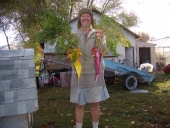
 15
15





 11
11




Live, love life holistically
 6
6




 8
8




Best luck: satisfaction
Greatest curse, greed
 5
5




 7
7




 7
7




 4
4




 5
5




 4
4




 7
7




$10.00 is a donation. $1,000 is an investment, $1,000,000 is a purchase.
 7
7




 6
6




 4
4




Best luck: satisfaction
Greatest curse, greed
 4
4




 6
6




With blessings, always

 3
3




Working toward a permaculture-strong retirement near sunny Sperling.
 3
3




Mediterranean climate, hugel trenches, fabulous clay soil high in nutrients, self-watering containers with hugel layers, keyhole composting with low hugel raised beds, thick Back to Eden Wood chips mulch (distinguished from Bark chips), using as many native plants as possible....all drought tolerant.
 3
3




Best luck: satisfaction
Greatest curse, greed
 1
1









|
You totally ruined the moon. You're gonna hafta pay for that you know. This tiny ad agrees:
The new permaculture playing cards kickstarter is now live!
https://www.kickstarter.com/projects/paulwheaton/garden-cards
|




